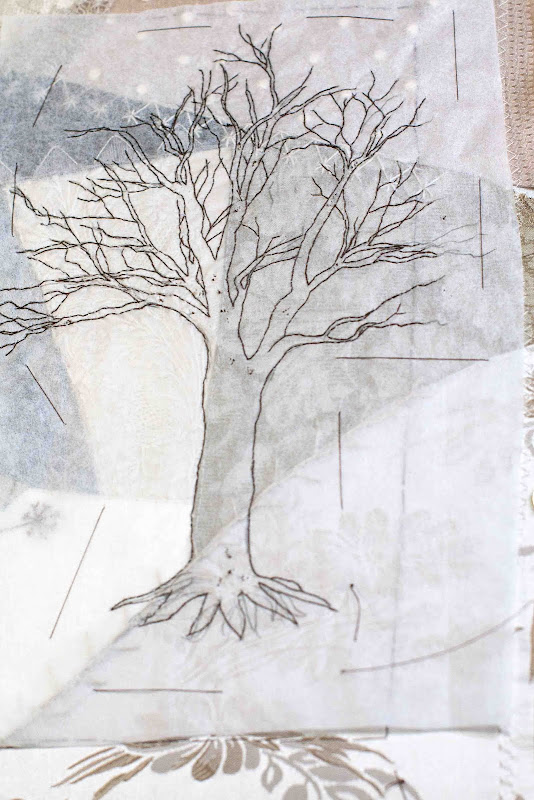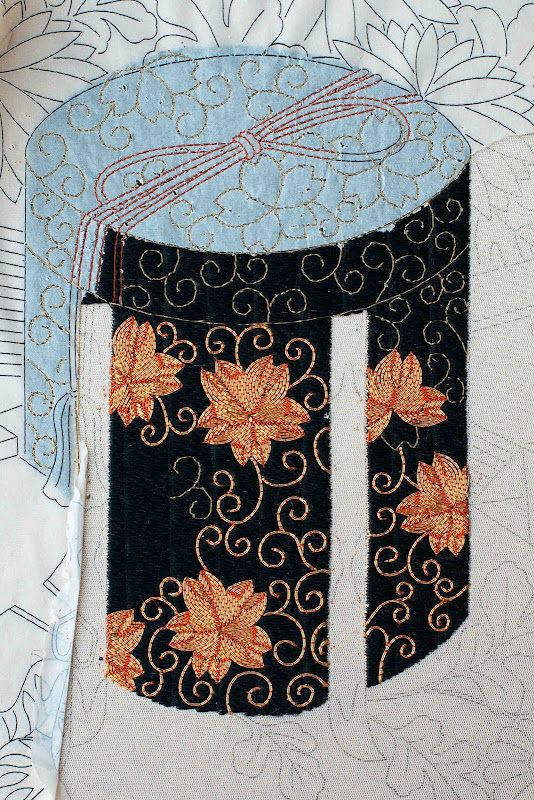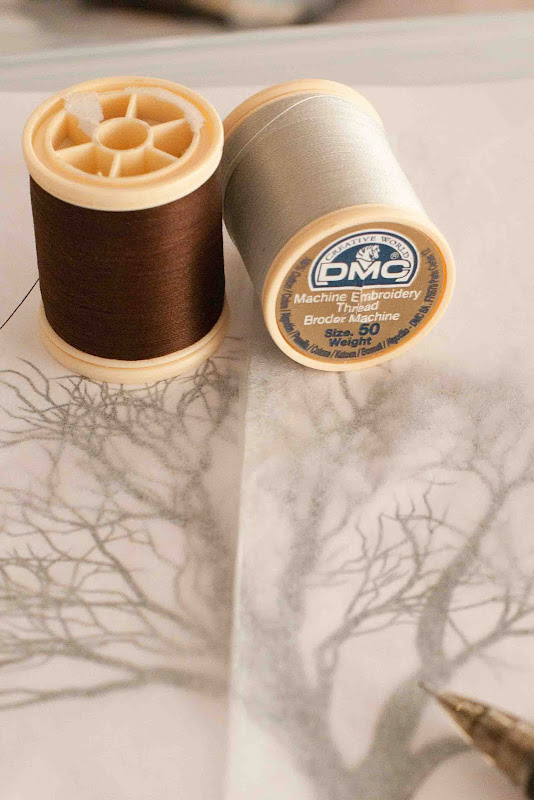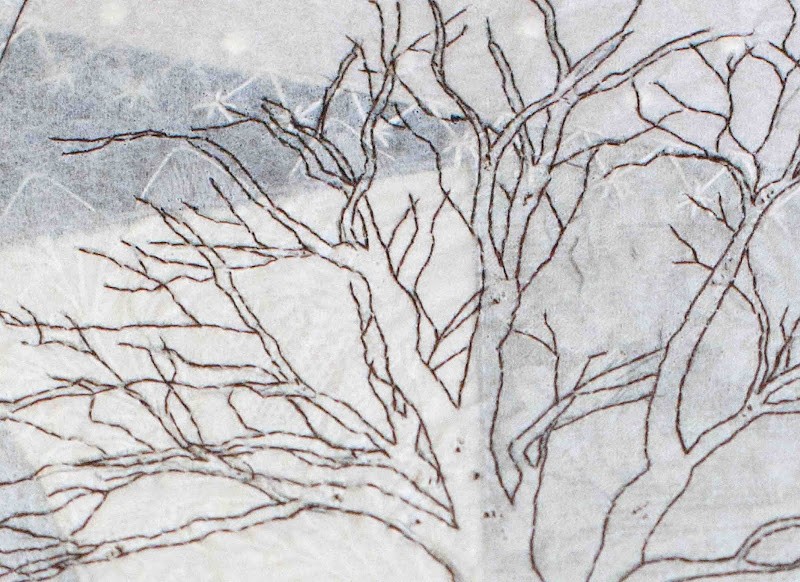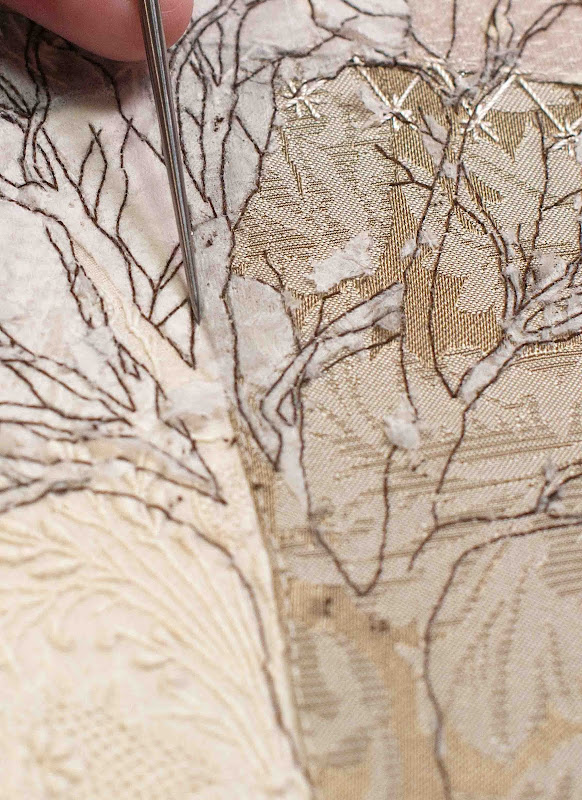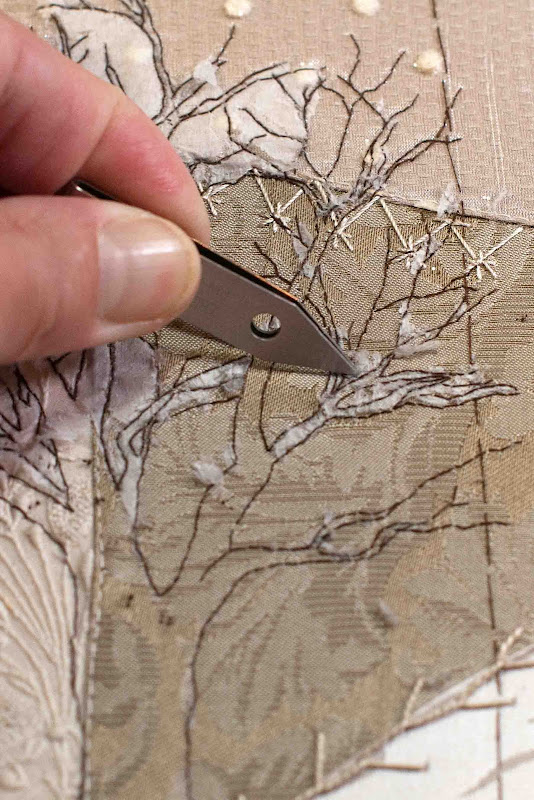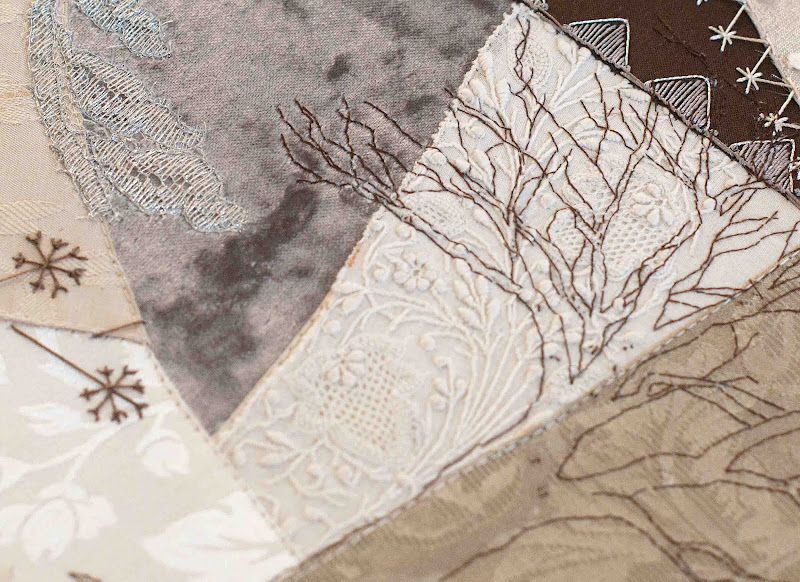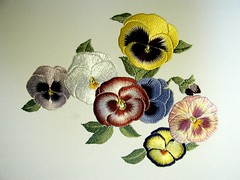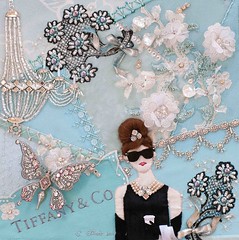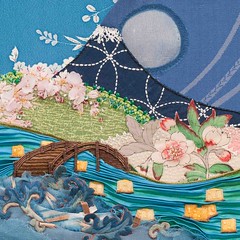We had a nice long holiday weekend and I did find some time to work on my January block. I really am trying to get this finished up soon but some things can't be rushed.
Like tissue transfer...
Though there are many methods of transferring embroidery patterns to fabric, tissue transfer is the method I use most.
It allows me more precision in the transfer and position of the design and is the most versatile of all methods. The downside is it does take a bit more time.
I first learned the discipline of tissue transfer in Japanese embroidery. Having only embroidered on pre-stamped fabrics previously, I didn't have much experience in transferring my own designs and I remember feeling the process was fairly onerous when I first learned it.
In this picture you can see how tissue was used to transfer a pattern on top of a base layer of satin stitching. The transfer line then serves as a guideline to couch the goldwork on top and the result is stunning.
Today, what I once thought was a bit onerous is now just another tool in my toolbox and part of my workflow.
As usual, it's good to start with the right tools...
You can use any tissue really but you'll find some tear away more easily than others. In my experience, the cheaper tissues are better for this.
I also use a small sharps needle and a very small thread. Sewing thread will work but it's still thicker than I like. I use DMC's machine embroidery thread but any size 50 thread weight will do...
After transferring the design with 0.7mm mechanical pencil, I then backstitch around the entire pattern taking fairly small stitches of about 1/8". (If I'm doing curves, I'll use a line of held thread instead of back stitch but that's a discussion for another day...)
The size of your needle really is important. The smaller the needle, the less you'll tear the tissue and distort your penciled design.
After stitching is complete, I use my favorite laying tool, my
handmade Japanese tekobari. Again, that's a subject for another day just suffice it to say that it is a multi-purpose player in the toolbox and I use it to score the tissue on each side of the backstitches all the way around the design. Minus a tekobari *wink*, you can use a large sharp chenille needle, awl or anything with a good point...
This makes the lifting away of the tissue MUCH easier. Score first, then tear.
Undoubtedly, there will many tiny bits of tissue stuck between stitches...particularly when you have tiny branches etc.
A magnifier and good light doesn't hurt here either.
When finished, the design is transferred and ready to stitch.
It's a terrific method for use in crazy quilting where layering motifs over fabrics and seam treatments is commonplace.
In my block, you can see that I've placed a part of the tree over a pre-embroidered needle lace cuff, seam treatments, and different fabric types...even velvet...
The only way to get the transfer over top of all that texture in an accurate manner, is tissue transfer so I hope you'll try it.
There's still plenty of time to join in the fun and make your own book of needles. Though the full kits are sold out, I do have some felt pages and needle labels remaining but they are going fast...
Have a great day everyone. See you next time!








